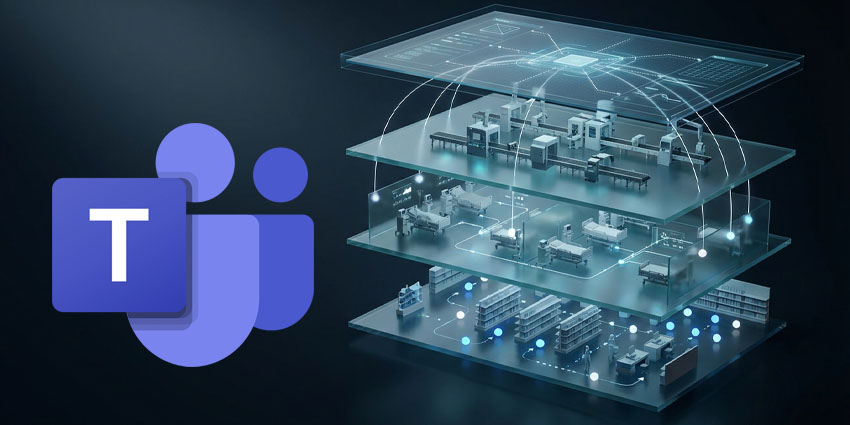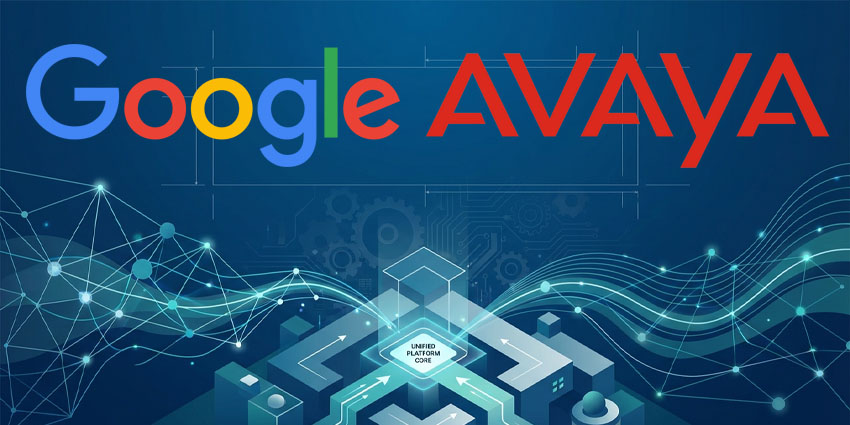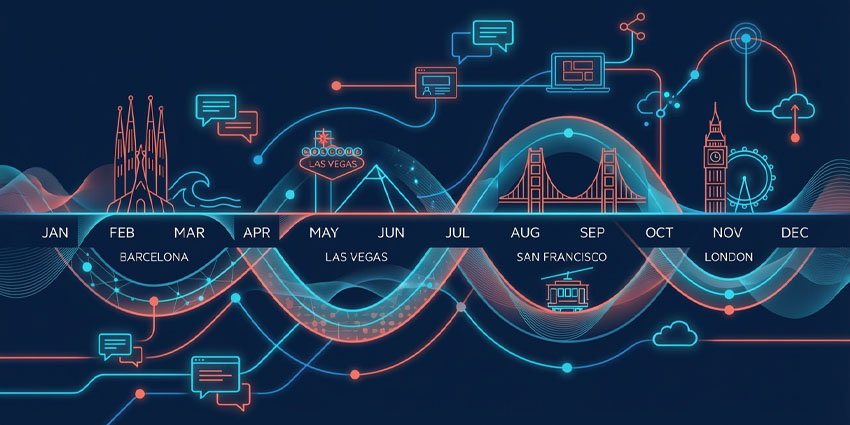Whether one was quick to jump on board or slower to join the party, the convergence of AV and IT is here, and here to stay. The line between these distinct functions once siloed within their own boundaries has been permanently blurred. Driven in large part by advancements in content service technologies such as collaboration platforms, digital experience platforms, web content management, and customer communications management, today’s digital workplace requires an intrinsic commitment to communication, collaboration, and productivity using any device from anywhere. By joining forces, AV and IT pros are ideally positioned to meet these needs.
That’s a good thing for the enterprise (or school or other organisation). Benefits of the AV/IT convergence to the end customer have been well defined. Delivering AV over IP offers faster deployment along with a high-quality user experience. Moreover, it provides the greater cost efficiencies inherent to a system that offers fast, easy scalability and reduced maintenance. Outstanding flexibility with a future-forward focus is the bottom-line benefit. From large enterprises to educational campuses to SMBs, AV over IP empowers organisations to add AV sources and endpoints quickly and easily as their objectives and needs demand.

This transformation toward greater simplicity and efficiency over a centralised network is a boon to organisations that have faced increasing and non-stop complexities brought on by the rapid development and adoption of digital devices. This “digital transformation” and AV/IT convergence go hand-in-hand. Which is not to say that one side of the convergence coin has dominated or should dominate the other. The IT world may have been faster and louder to proclaim the advantages they gain as a result of this convergence. Nonetheless, AV pros have much to offer and gain from the outcomes of convergence as well.
While AV integrators could view the internal corporate IT team as their immediate customer (and the IT staff view the AV integrator as merely a vendor), the ultimate customer is in actuality the organisation itself. This is a more efficient way to parse the problem, and empowers both sides to join forces as equals working together toward the same endgame. In today’s converged world, both IT and AV are at their best when they team up to assess and implement on an organisation’s goals and internal user needs.
Communication is the key to unlocking the treasure chest of benefits promised by AV over IP. It’s essential for IT and AV professionals who want to work together to meet the needs of their common customers. Historically, language has gotten in the way of this process, with IT pros having their own distinct dialect, and AV afficionados likewise conversing in their own vernacular. Those who make take the time to learn one another’s language will go far in this brave new world of fully-converged AV/IT solutions. One can imagine a not-too-distant future where the languages themselves will have fully converged.
Beyond speaking the same language, there are other ways AV and IT pros can rally to meet customer needs. Security is one area in which this has already happened, with both sides clearly committed to this non-negotiable goal. Both parties would be wise to also agree on the goal of implementing hardware- and software-agnostic solutions wherever feasible. Just as AV and IT pros must learn fluency with one another to achieve the greatest efficiency and outcome success, so must the systems they implement be able to “converse freely” with the ever-expanding array of business productivity applications and video solutions.
 Take the typical business conference room. It’s safe to say there isn’t one. From small-scale ad hoc collaboration spaces like huddle rooms and lounges to moderately sized meeting spaces and fully-decked out boardrooms, AV integrators encounter every possible set of configurations and needs. The largest enterprises may seek complete transformation into full scale, video-first environments standardised across their every meeting space. Most organisations, however, won’t have pockets quite so deep.
Take the typical business conference room. It’s safe to say there isn’t one. From small-scale ad hoc collaboration spaces like huddle rooms and lounges to moderately sized meeting spaces and fully-decked out boardrooms, AV integrators encounter every possible set of configurations and needs. The largest enterprises may seek complete transformation into full scale, video-first environments standardised across their every meeting space. Most organisations, however, won’t have pockets quite so deep.
The need to accommodate and leverage legacy components is often an ask. It’s a request that doesn’t have to rule out video-first ease, fast meeting startups and efficient content sharing. Specking and deploying agnostic systems can empower companies to provide a nimble response to users’ collaboration and communication needs. From huddle spaces to boardrooms, for instance, deploying fully-agnostic collaboration displays, like ViewSonic ViewBoard interactive displays, enables complete organisational flexibility to use their choice of cloud video conferencing applications – from Cisco WebEx to Zoom, and everything in between. Ditto for the hardware components.
Here’s one case in point. A large customer of ours had meeting rooms outfitted with a wide array of AV equipment, from Cisco to Polycom, and more. They had legacy displays that predated our relationship with them. Some rooms had projectors, and not always the same ones. So users had to learn different protocols for different rooms, often requiring an array of different cables and the like. Not very efficient.
The company was adding new space and wanted to bring greater standardisation across rooms to streamline the user experience and improve meeting start up time. These were no small considerations for a company that held weekly meetings with distributed teams across North America and met with customers on a nearly daily basis. Increasing productivity through speedy startups and intuitive collaboration stood to deliver measurable rewards.
For them, as for many customers, intuitive technology that didn’t stall meetings was vital. But along with standardisation, they needed usage flexibility to accommodate employee and customer preferences. It was critical that they be able to easily use the latest tools, such as Teams, Zoom and more, to offer outstanding flexibility. Totally agnostic interactive displays, as well as any related software, were a must. This type of solution exemplifies what works well for everyone involved – from internal IT staff, to AV integrators, to the ultimate end customer – and in turn their internal customers.
Along with device/software agnosticism, the more streamlined the solution, the better. Modular solutions inject complexity, inefficiency and added cost. When AV and IT pros team up to deliver simplified, or even all-in-one solutions, the greater the benefit to the organisation they both serve. For example, interactive digital displays with built-in content sharing, content markup, video conferencing capabilities and one-touch startup save companies time, money and headaches. They support and enhance the multi-device, multiple-location collaboration that is at the center of today’s modern workplace, and a major driver of the converged AV/IT ecosystem. Which is why large screen interactive displays are seeing double digit growth across all sectors.
Customers have grown weary of the hassles, time and expense of modular solutions that require them to piece together multiple components from multiple suppliers. Thankfully, today there are more options than ever for delivering simplified conference room collaboration systems that provide fast, video-first meeting startups and intuitive content sharing. These important capabilities enable participants to focus on ideation, collaboration and other meeting goals, without distraction from the meeting room technology.
So, this is yet another area in which AV and IT pros can converge to meet customer needs. Streamlined solutions not only add efficiency during meetings, they reduce IT time needed for deployment and maintenance. It’s a huge win-win all around, particularly for AV integrators who’ve done their homework and are prepared to advise IT departments and their organisations on solutions that meet these parameters.
It’s an exciting time to be involved in delivering communication and collaboration solutions. Organisations are keenly focused on leveraging the benefits of digital collaboration to a workforce that is more flexible and distributed than ever before. Change doesn’t have to be negative – it can be invigorating and enlightening. The AV/IT convergence offers outstanding benefits for the users of collaboration technology, as well for to those who manufacture, configure, install and maintain it. To best deliver the new tools and tech that users need to optimise collaboration and productivity, we must embrace the change.
At ViewSonic we’re continuing to lead the way in this new, converged AV/IT ecosystem by developing all-in-one, out-of-the-box interactive display solutions. With solutions that support smart, cloud-based collaboration software and an array of intuitive, flexible tools, business is equipped with the speed and features needed to efficiently communicate, collaborate and create – today and tomorrow.
Guest Blog by Jeff Volpe President, Americas for ViewSonic
ViewSonic is a leading global provider of display solutions for education, enterprise and commercial markets helping customers “See the Difference.”







